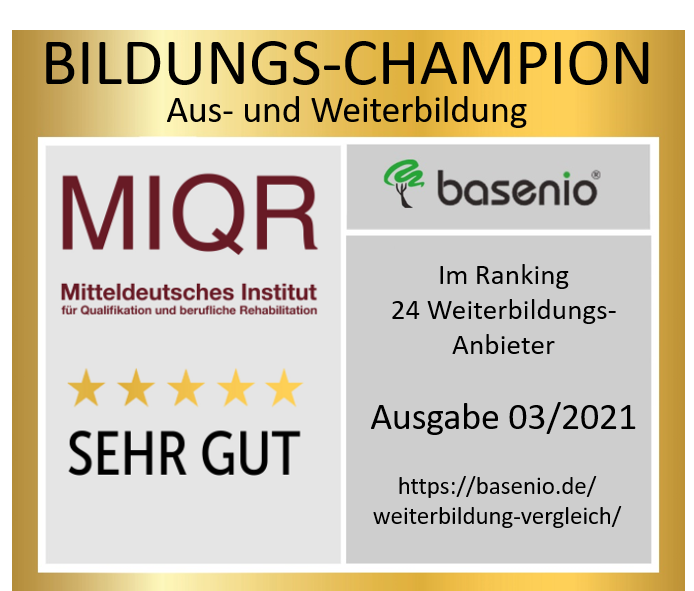Resolving conflicts in a team Examples | handling | Coping | methods
Resolving conflicts in a team - examples of how to deal with them and methods of overcoming them
Reading time: 30 minutes | Status: 31.03.2022/XNUMX/XNUMX | Author: S. Grober
Hardly anyone is a friend of conflicts. They are exhausting and nerve-wracking as well as frustrating and depressing. Especially in the professional environment, such tensions are a hindrance, as they cause stress in the office and impair the working atmosphere. For this reason, most try to avoid possible confrontations. While conflict is very unpleasant, it is also a valuable experience that you can even benefit from. Are you wondering how this is possible? In this post we explain how conflicts arise, how they are best managed and how you and your company can take advantage of such situations.
What is a conflict?
The term "conflict" describes an argument. This can be carried out between two people, groups and even in larger, collective, social or political spaces, for example social circles or nations. Disagreements, different behaviors, sympathies as well antipathies are quite normal in everyday life. They are an expression of our individual personality and world view. A conflict arises when opposing perspectives meet and, as a result, differences of opinion arise. These can take on very complex forms and be carried out on different levels.
What types of conflict are there and how do they manifest themselves in professional life?
Not every conflict is the same, because disputes arise for a wide variety of reasons. In the following we would like to introduce you to general types of conflict and how they manifest themselves.
relationship conflicts
Relationship conflicts are one of the most common types. Interpersonal problems or a lack of sympathy are often the reason why you simply don't get along with a certain person. It is therefore a personal dislike, which can be justified in very different ways. Whether it's the wrong choice of words, a different sense of humor, or a different way of working, relationship conflicts are always motivated by one's feelings. They appear when one feels misunderstood, humiliated, pressured, disrespected, or undervalued by another, among other things.
conflicting goals and values
Conflicts of interest arise, for example, when different ideas about strategies, corporate values and objectives clash. There can be no common visions, no uniform guidelines and no stable team culture to be developed. In general, two different scenarios for the emergence of causes can be identified. Two parties try to achieve their own goals, but get in each other's way with their own tasks.
role conflict
Role conflicts are disputes that can arise as a result of a role change. Known areas of responsibility and structures are broken up and reorganized. Depending on which position you take yourself, you have to be superior or inferior. Such a change is fraught with risks for potential disputes.
distribution conflicts
Distribution conflicts arise when the distribution of wages, recognition, appreciation, tasks, material resources, professional opportunities or the like is perceived as unfair. The scarcity of resources is usually the reason why a competitive situation arises. Although this can lead to an increased willingness to perform in the team, the competition offers a lot of potential for conflict. The person who has to make the distribution also gets into trouble, especially with himself. Not infrequently, several employees prove worthy of a promotion, but this cannot be granted in all cases due to budget constraints. The correct allocation of the contested resource can then be felt as a decision compulsion.
Perception or judgment conflicts
This is literally a difference of opinion. Everyone has a different perception and based on this, individual views develop. A conflict arises when one's own opinion is taken to be absolutely correct and the view of others is written off as error. Admitting oneself to be right and denying the opposite is the classic basis for a conflict of perception. In principle, uncompromisingness or intransigence is a characteristic of all types of conflict. Every expression of opinion is supported by individual values and ideas. These clash in some situations and can escalate if not settled.

How can conflicts arise in the team?
It has already been clarified that there are very different types of conflict and that they can have different reasons. In the following, we summarize for you how conflicts arise and examine exactly what causes team conflicts.
emergence of relationship conflicts
Relationship conflicts are usually initiated by a specific event. Sometimes this can even happen unintentionally, for example through an unfavorable formulation that hurts the feelings of the other person. Another key point of friction can be, for example, an approaching deadline. Driven by stress, verbal arguments, such as complaints or accusations, can quickly arise. The more precarious the situation, the faster tensions can arise on a personal level.
Creation of conflicts of goals and values
In the working world, conflicts of interest occur primarily in the organization and coordination of projects or internal processes. Conflicting debates can arise, especially when there is a change in objectives, if different groups of people prefer different approaches. Another example would be when vision and necessity collide, such as in the case of an existential or financial crisis. In order to cope with this, company costs often have to be reduced and, in extreme cases, jobs also have to be cut. Such procedures, which serve to secure the existence of a company, are in strong conflict with ensuring employee satisfaction. This is how different and incompatible needs meet.
emergence of role conflicts
A so-called role conflict can arise as a result of a promotion. If, for example, a colleague with whom you could previously talk as equals takes on the position of boss, suddenly different manners can apply. However, when distrust or doubts arise about the new hierarchy, tensions and disputes are inevitable. Role conflicts are often also generational conflicts. For example, if a younger employee is appointed as a project manager and wants to impose new views on more experienced team members, this can also cause disharmony.
Emergence of distribution conflicts
Ambition and competition are an essential part of professional life. Who manages the career leap, receives a salary increase, gains more responsibility and prestige or is allowed to attend training courses and trade fairs? Many strive for career advancement, but not everyone gets the opportunity to do so in their career. Especially since there are usually several people interested in a better position. Decisions about promotions or salary adjustments can create conflicts in a company. Then envy and jealousy are often responsible for the fact that tensions arise and harmonious cooperation is disturbed.
Development of conflicts of perception and assessment
This type of conflict can occur in project management and anywhere where plans, concepts or programs are implemented. The question of "how" is often the point of contention. The manner of implementation causes discussions, which can quickly lead to differences due to different approaches. Views as to which idea has the best chance of success can differ widely. On the one hand, such a situation can be productive and team-building with factual arguments, but on the other hand, it can also degenerate into disputes on a personal level.
Origin of conflicts explained with the iceberg model
A model to understand the emergence of conflicts is the so-called iceberg model respectively iceberg principle. Basically, it is a communication model that symbolizes the apparent and hidden layers of meaning of a message. The tip of the iceberg stands for the factual level that was consciously expressed, i.e. for all information and facts that are communicated. However, the much larger part of the iceberg lies below the water and accordingly out of view. On this invisible level are the unconscious messages, the individual feelings, values, motives, interests and needs. In order to get to the bottom of a discrepancy, the invisible must be made visible.

What are the consequences of unresolved conflicts?
Different life situations can give rise to a wide variety of conflicts. Accordingly, the consequences can range from manageable to very critical. In some cases, reconciliation is difficult to implement. Personal or professional disputes, for example, have less of an impact than disagreements in politics. Friedrich Glasl's model of nine escalation levels is used both to understand and to analyze conflicts. In the following, we will examine the phases involved in more detail.
1) hardening
The first symptoms of a conflict are tension and differences of opinion. If two parties do not accept each other's view or opinion, but instead insist on their own point of view, the fronts become increasingly entrenched. Without the willingness to expand one's own horizon, to question one's own attitude or to open oneself to other positions, there can be no rapprochement.
2) debate
Through arguments and debates, an attempt is made to communicate the contents of the conflict. In principle, this is a good approach, but an uncontrolled discussion can quickly heat up and degenerate into another argument. This level of escalation is reached when the goal of the conversation is to convince the dialogue partner of your own point of view. He should be persuaded to give up his position. At this moment, the arguments of the other party to the conflict are no longer recognized or only insufficiently recognized. One's own standpoints are categorized as correct, others as wrong, and gradually the conflict talk turns into a power struggle.
3) Actions instead of words
This is where verbal communication comes to a standstill; instead, pressure is exerted on the interlocutor. Empathy or logical arguments then no longer have any meaning and are also not communicated. A clear aggravation of the situation is noticeable, with the focus on the compulsion to change immediately. This should be followed by immediate actions and the interlocutor is forced to react as well as to take action. In this phase, the communication partner is viewed as an "opponent" to whom personal displeasure is signaled. It is made clear how unfairly one feels treated and that one sees the other party as the culprit. Facts and faits accomplis are intended to deprive the other of the basis for argumentation.
4) coalition
From this escalation level, the conflict takes place on a different level. Now it is almost impossible to find a compromise or a solution that both parties are happy with. It is no longer about overcoming the conflict, but about being right. As the argument progresses, there will most likely be a loser who will suffer the resulting negative consequences. A further aggravating factor is that the immediate conflicting parties may seek allies to substantiate their own point of view. This reinforcement strengthens personal opinions and suppresses the views of the other person who are considered wrong.
5) loss of face
From that point on, it's all about harming the other person. Empathy has long been out of play here and moral concepts are also increasingly being discarded. For the purpose, i.e. the humiliation and degradation of the other person, almost any means is right. The dispute has now escalated to such an extent that the "destruction" of the other is accepted or almost desired.
6) threat
Here, the power struggle is carried out through threats, i.e. the announcement of unpleasant measures or consequences. Both parties to the conflict try to outdo each other. The goal is to intimidate until one gives in for fear of the consequences. The decisive factor for success is to radiate the greatest possible credibility. In the end, whoever uses the most convincing threatening strategy will gain the upper hand and thus the conflict. As a result, the defeated party to the conflict is humiliated and belittled.
7) Limited Destruction
Once this escalation level has been reached, the transition to the third and last conflict level takes place. There are no more winners here, because then the conflict will have negative consequences for everyone. It is even very possible that both parties to the conflict are aware that they themselves will be harmed and, to some extent, will suffer as a result of the conflict. However, this is accepted if there is a chance that the other person will be worse off as the conflict progresses. There is no morality or compassion at this stage, but rather selfishness, glee, and a degree of spite. To prepare the other as much defeat as possible is all that counts.
8) fragmentation
Here the conflict has escalated to such an extent that not only the opposing party to the conflict is to be harmed, but also all those who acted as supporters and allies. The entire enemy system should be systematically dissolved and destroyed - through mental, social or mental attacks. In this way, the quarrel partner becomes isolated, loses support and becomes vulnerable.
9) Together into the abyss
At the last escalation level, a conflict fight takes place with a high risk of loss. At this point it is accepted that one's "annihilation" is not only a possibility, but very likely. But this is accepted if the opponent falls into the abyss with one. There is no longer any consideration for yourself or your own environment.
How can conflicts be recognized early?
Conflicts do not arise spontaneously. They also do not begin at a high level of escalation, but usually develop gradually and increase in intensity. In order to avoid major conflicts, it is important to recognize conflicts at an early stage in order to start appropriate attempts at solving them. Attention is required here, both from the managers and from the individual team members. If everyone pays attention to each other, sources of interference and conflict signals can be found quickly and a corresponding one conflict management be initiated. The lower the escalation level at the time the conflict is identified, the more successfully and quickly the discrepancies can be resolved.

How should on conflicts not be reacted to?
The word "conflict" is often followed by a bad connotation. For this reason, many shy away from an argument and prefer to maintain a hypocritical harmony instead of leaving room for personal frustration. How could anything good come of it when the conflicting parties collide? However, avoiding arguments is the wrong way, because problems cannot be solved in this way. Instead, these accumulate further and possibly discharge explosively. This often happens unexpectedly and bystanders or one's own private life can be the victims. This sudden and contextless escalation then provides new potential for conflict in another social area. So ignorance and running away doesn't work, it creates a vicious circle.

Conflict-averse types can appear in two different variations. The ones that want to avoid conflicts at all costs have already been listed above. The second type does not involve an open confrontation, but rather an indirect confrontation through insinuations, taunts and ironic or sarcastic comments. Individuals with this behavior would never let go of their cover and would instead feign harmony. In this way, the other person always remains in the dark and may not even be aware that tensions exist. The passive-aggressive behavior then causes restlessness in the team and worsens it work atmosphere. In addition to conflict-averse people, there are also those who are particularly argumentative and use differences of opinion as an outlet to relieve personal anger. This type of conflict can turn a mosquito into an elephant with its comments and behaviors. In this way, trifles are exaggerated to the point of serious disputes and sources of conflict are also fueled. This does not solve a dispute, but rather deliberately continues it.
Anyone who keeps those affected from a clarifying conversation prevents an open conflict situation. This only unnecessarily delays the escalation and increases tensions until there is inevitably an enormous outbreak. The more heated and deadlocked the opposing positions are, the more difficult it is to initiate reconciliation. Harmony and quarrelsomeness are unhealthy behaviors that can significantly damage group dynamics and team culture.
Why can conflicts in a team be positive?
Conflicts represent an opportunity for personal and professional development. A dispute can also provide information about how the personal tone or the individual manner is received. However, since no professional feedback rules are usually observed here, it is difficult at first to not interpret the statements as a personal attack. Some distance or a mediator is needed here so that space can be created for self-analysis.
Conflict can also help to break down rigid team thinking and habits, as well as encourage creative ideas and solutions. For example, new team members or large project work provide an incentive for positive changes. Through an open exchange of opinions, different working methods and innovative solutions can be promoted.
In addition, controlled handling can Conflict ability get extended. This is an important soft skill, also with regard to leadership skills, which can improve the team culture.

Top 10 conflict resolution methods and examples
The world of work is also a social area that is not exempt from conflicts. However, with the right discussion strategies and clever solutions, imminent disputes can be intercepted in good time and harmony can be brought back into the team. The disciplines of psychology, applied and theoretical social sciences, communication sciences and philosophy provide various models for the analysis and process of conflict situations. Procedures for effective and sustainable conflict avoidance and resolution can be derived from this.
1) Recognize conflict
Dealing effectively with conflict in the workplace depends entirely on how involved you are. Are you directly involved as an ally or are you simply aware of the conflict situation as an outsider?
We have already explained in the previous paragraphs how conflicts can be recognized early. Usually, those involved are aware that there is a disagreement. However, their own pride keeps them from taking a step towards each other. It can also happen that the conflict is not even recognized by the other party. Whatever the situation, the disagreement will not resolve itself. For this reason, it is important to approach your counterpart and address the problem. However, this should be done in a quiet place. The following applies here: The earlier the conflict is addressed and a solution strategy developed, the better.
2) Ask for backgrounds
Before a conflict can be resolved, it must first be clarified why it arose. In order to be able to identify the points of conflict, the causes must be found accordingly. When did a conversation or situation develop into a confrontation? Where do you see the trigger for the argument? When investigating the cause, all sides must be taken into account. Accordingly, the other party to the conflict must also be asked about the dispute. So that the dispute is not conjured up again, a solution-oriented approach must be taken. This intention should definitely be communicated.
2) Joint discussion
A joint discussion should be under the motto "describe instead of judge", whereby no hostile accusations should be made. Open attacks, accusations and accusations only lead to solid fronts between the disputants - in the sense of: "You can't talk to him anyway“. Only with non-violent communication can a constructive culture of debate be created and differences be settled quickly.

3) Apply Harvard concept
The so-called Harvard concept consists of several negotiation principles. These strategies should lead to a win-win situation, i.e. to a result based on consensus or compromise, which satisfies both parties to the conflict. This concept can also be applied in the workplace and follows two guiding principles:
First: "Tough on the matter, but soft on the people." People and problems should always be treated separately. Even if the points of view differ greatly on a factual issue, a friendly and interpersonal relationship should always be maintained. In this way, a peaceful agreement can be reached and a solution can be found.
Secondly: "You should pay attention to interests, not positions." Individual interests stand behind every position, decision and action. Since these are not always obvious, they should be said openly. Only if the interests are known can they be taken into account and ideally brought into line.
4) Find common ground
Conflict means a difference of opinion that separates the two communication partners. However, conflict talks should ensure that the focus is not only on the differences. Similarities form the best basis for finding a solution. Ideally, ending the conflict should be the first common goal. It is also in the interest of both parties to create a pleasant working atmosphere again, in which one feels comfortable and can be productive. Perhaps the conflicting parties are also compatible through other goals, for example through the motivation to master a joint large-scale project. With these common needs in mind, it is possible to build stronger interpersonal relationships. This bond can help to weaken and resolve the conflict.
5) Communicate with respect and empathy
Conflicts are often based on disagreements and misunderstandings. When defending one's own point of view, however, it is easy to make the mistake of adopting a one-sided and inflexible position. If you stubbornly insist on your own arguments and the other person is to be persuaded to rethink, tension can quickly arise. Respect, trust and the acceptance of other opinions form the basis for a healthy team culture.
Conflicts can arise simply because a teammate does not feel valued. However, this can be prevented by careful communication behavior:
- Always let your interlocutor finish speaking.
- Listen aktiv .
- Never look down on other opinions.
- Be open and tolerant.
- Prejudice and accusations should never be spoken out or non-verbal be communicated.
Even if you don't want to deviate from your own opinion, you should be aware that the other person may feel the same way. Don't close your mind, but keep it open to other views and perspectives. This makes it possible to come closer despite differing opinions and to have a lively debate instead of a conflict.
6) Conflict management in the company
Minor differences of opinion between team members can certainly be clarified personally in private. To do this, both parties to the conflict must be solution-oriented and follow the relevant rules. But what happens when the escalation has already progressed and the parties are not willing to compromise? Such a disruption in the team can lead to a drop in performance. In order to prevent the conflict from spreading further, internal conflict management should intervene. To this end, the company uses targeted measures to make the dispute among employees constructive. The organization of conflict management is primarily the responsibility of managers. They should carefully monitor the working atmosphere so that potential sources of disruption and conflicts can be identified and resolved at an early stage. Possible means of evaluating the team culture are, for example, performance controls, such as time recording when processing tasks or surveys. For example, sudden or long-lasting drops in performance can be a sign that something is wrong in the team. This can be discussed in employee appraisals and possible sources of conflict identified.
7) Help from mediators
Discrepancies are often the result of misjudgements and misunderstood communication. Then the most important thing is to work on communication within the team. The key terms here are “objectivity”, “empathy” and “respect”. Through Mediation, conflict management led by a neutral mediator, will help the conflict partners to successfully de-escalate. These mediators guide the interlocutors and intervene when necessary. This creates a controlled environment in which conflicts can be openly dealt with and resolved.

8) Conduct conflict workshops
When a conflict has developed between several team members, discussions alone are often not enough to resolve the dispute. If there are several parties who all want to have their say, it can quickly lead to an uncontrolled discussion. A methodical approach is required here. Within a workshop, problems can be analyzed individually and common solutions can be found that are acceptable to everyone. Creative strategies show lasting effects here, as they open up new approaches and integrate every team member equally into the solution process.
The following methods, among others, were used to resolve conflicts in the team:
BRAINSTORMING: Here, uncommented solution proposals are collected and written down. The various ideas are then discussed in the group and evaluated as to which of them should/could be implemented.
STUMBLING STONE METHOD: With this creative solution, all parties to the conflict should be motivated to work as a team. To do this, all those involved write down the aspects of the conflict they have identified on cards. These are then attached by the mediator to a pin board like a wall. Afterwards, it is considered which points should be tackled together in order to solve the conflict.
SIL METHOD (Successive integration of solution elements): Here the team members are first asked to work independently on a solution to the conflict. Then an attempt is made to combine two different approaches. This method shows that common concepts can be developed from different perspectives.
COST-BENEFIT ANALYSIS: Although this method sounds like a commercial calculation model, it can also be used to resolve conflicts in a team. Here the group discusses clarifying the benefits of the conflict: Who benefits from it? What is gained from the conflict and what price must be paid for it. This is intended to raise awareness of the negative effects of the conflict and to increase the motivation for conflict resolution in the team.
9) Follow feedback rules
Feedback means criticism and this can sometimes be negative, especially in working life. After all, everyone makes mistakes and these should also be addressed and clarified so that they don't happen again. However, this process can quickly be taken personally and trigger a conflict. To prevent this, feedback rules should be followed. The principle applies that criticism must always be factual and constructive, never accusatory or destructive.

10) Conflict prevention measures
Of course, it is always gratifying when trouble spots can be identified early and resolved successfully. However, it is even better if there is no conflict in the first place. After all, prevention is better than aftercare. Successful conflict management must not only use active measures to resolve conflicts, but also to avoid conflicts. The best basis for this is good internal communication within the company. Managers and team leaders can set a good example for this. An open-minded attitude that allows for disagreements and does not simply ignore differences can create a space for the open exchange of opinions. Employees should be actively motivated to express their own views while applying the rules of conflict-free communication.

Communication training from the MIQR
The better communication is possible, the easier it is to avoid or overcome misunderstandings. We from Central German Institute for Qualification and Vocational Rehabilitation (MIQR) also carry out communication training as part of our educational measures. In these, we would like to impart important general and social skills so that your career start is successful and you can easily adapt to your future working environment. During the training you will learn various methods and strategies for successful communication, both in job interviews and in a team. Among other things, the principles of successful and sustainable conflict management are discussed.
We offer special training measures in which professional communication training is also carried out and conflict management is discussed. These include ours Modular training courses (MWe). Here you will have the best opportunity to receive further training in an individual and target-oriented manner for a professional field of your choice. Depending on the personal requirements and professional plans you have, you can qualify for a job in the logistics, guard and security or care sector. In 10 to 20 weeks you will be fully prepared for your timely and sustainable career start.
Our further training courses (MWe) at a glance:
- Helpers in geriatric care (MWe)
- Everyday companion/ carer (MWe)
- Specialist warehouse/logistics (MWe)
- Housekeeping (MWe)
- Guard and Security Service (MWe)
We also offer the promotion of communication skills as part of our retraining to:
- Clerk for office management
- Industrial clerk
- Merchant in e-commerce
- Clerk in health care
- Clerk for wholesale and foreign trade management
If you have any questions about our range of services, you can contact us at any time. We will be happy to advise you and help you to select a course that exactly suits your educational and career aspirations. Simply get in touch using our online inquiry form or by telephone on 0800 77 89 100.
Summary
Conflicts accompany us throughout life. Since childhood we have known disagreements and small arguments with group members or authority figures. Thus, everyone should be familiar with dealing with conflicts. However, such situations do not really evoke feelings of happiness. They are generally considered unsightly affairs that one prefers to stay out of. Conflicts in the workplace in particular have a negative reputation. Many do not know that disputes can also have an advantageous effect and bring about positive changes in the team. Your own communication behavior is decisive for the outcome of a conflict. Ignorance, intolerance of other opinions, disrespect and destructive criticism can disrupt the entire team culture and have a negative impact in the long term. However, if you show willingness to get involved with the other party to the conflict, joint solutions can be developed.
If you were interested in this article and would like to be informed about the Central German Institute and the latest educational offers, subscribe to our official newsletter Facebook page or follow our Instagram account.
If you have any questions about our offer or would like personal and individual advice, please send us an inquiry.


























